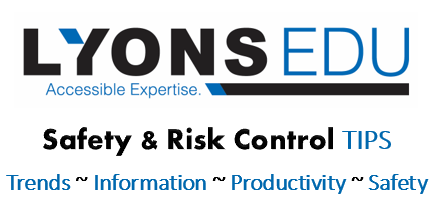Safety Committees & COVID-19
July 10, 2020
Stress, Creativity and Safety
COVID-19 has certainly added varying degrees of stress for organizations and their team members. The impact of stress in the workplace is difficult to accurately measure, but is known to negatively impact creativity and cause accidents.
“Stress is a well-known creativity killer”, says psychologist Robert Epstein, PhD. (American Psychological Association) and according to Dr. David Spiegel, medical director of the Stanford Center on Stress and Health, “there is a direct correlation between an increase in worker stress and an increase in workplace accidents” (Health + Safety).
In these uncertain and difficult times, cornerstones of productivity, like creativity and safety, can become true struggles. A solution to managing stress and maintaining a positive culture in the workplace has and remains effective communication.
Employee Engagement
Organizations that create a successful safety culture do so by building a communication strategy focused on employee engagement (Safety + Health, February 23, 2020)
Maintaining high engagement from an organization’s workforce will have a direct impact on safety. The National Safety Council offers these key elements for successful employee engagement:
- Communicate compliance standards and critical hazard recognition skills
- Build unified organizational support around the safety program
- Establish a culture of transparency around the safety program by creating a feedback loop
- Establish the importance of hazard recognition and safe behavior by celebrating your safety superstars
Engagement and Safety Committees
The good news is that there is a tried-and-true method for successful employee engagement—the Health and Safety Committee. If your organization has a committee, a refresh could be valuable and if your organization doesn’t have a committee now is the perfect time to establish one.
Below are six fundamental elements that all new or existing safety committees should have:
- Know where to start—Solid and public commitment from the senior leadership team
- State your purpose—Documented policies/bylaws, responsibilities and goals
- Get organized—Specify: Who and how the meeting minutes will recorded and publicized and; Membership rules
- Choose members wisely—Interdisciplinary with equal representation of line staff and managers
- Plan ahead—Develop a follow a standard agenda. Assign responsibility for improvements and track progress.
- Stress accountability—Meet at time that best fits members schedule, hold all leadership accountable for hosting meeting and members for attendance. Ensure all members are active with improvement items (not just chairperson).
In times of change and uncertainty, employees will have different needs. Continuous and positive support through engagement will help reduce stress and in-turn improve creativity and workplace safety.
Please contact the Lyons Companies’ Risk Control Services Department for assistance in establishing a safety committee or taking your committee to the next level.


